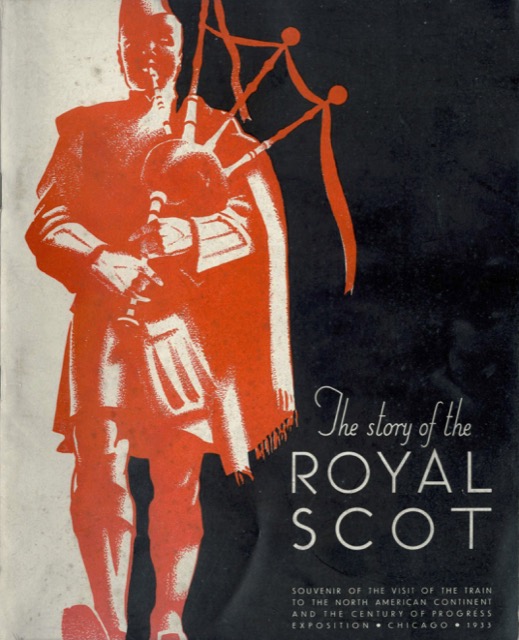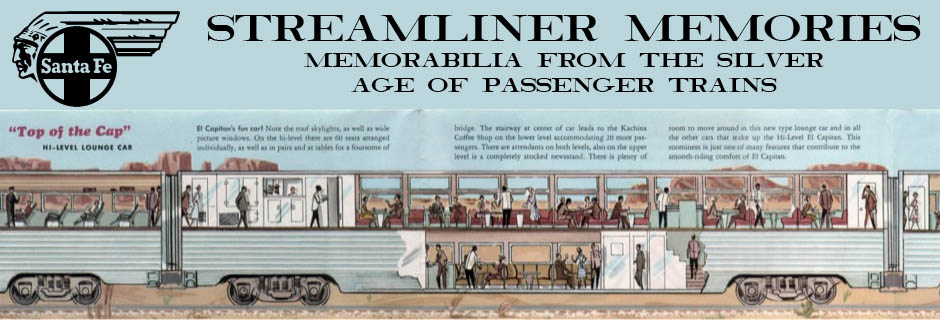People today generally view competition as a good thing, but a century ago businessmen usually preceded the word “competition” with “ruinous,” as too much competition prevented corporations from earning profits. At that time, Britain had more than 100 railway companies, many competing with one another. So when a railway executive named Eric Geddes became Minister of Transport in 1920, he conceived of the idea of merging them all into five regional monopolies.
 Click image to download a 14.0-MB PDF of this 52-page booklet.
Click image to download a 14.0-MB PDF of this 52-page booklet.
To divvy up the rail network, he cut England into four parts with London as the nexus, while he proposed to put all Scottish railways into a fifth company. Parliament, however, decided that the connections between Scotland and England were too important to require a change of trains midway, so the Railways Act of 1921 divided the Scottish railways between the two northern companies.
Since London is in the southeast of the country, this resulted in a very unbalanced system. The company in the southeast quadrant, known as the Southern, got only 2,200 miles of line. The southwest railway, known as the Great Western, got 3,400 miles including most of the railways in Wales. The London & Northeastern (LNER) got 6,600 miles including one of the main routes between London and Scotland. The London, Midland and Scottish (LMS) , which got the northwest quadrant, got 7,800 miles including two mainlines between London and Scotland.
Being the largest railway, the LMS could afford to send one of its premiere locomotives and a few passenger cars to the United States to participate in the Chicago Century of Progress Exhibition. This booklet is a souvenir of that trip and was probably sold for a nominal amount.
Though this is considered to be the same locomotive that went to the Century of Progress fair, it was heavily rebuilt in around 1950 and looks different from the pictures in the booklet in many ways. When Britain nationalized its railways, British Rail renumbered the locomotive from 6100 to 46100 to avoid conflicts with locomotives from other companies.
Most of the booklet is devoted to the locomotive, which was called the Royal Scot and which was one of several used to pull the railway’s most important passenger train, also known as the Royal Scot, which went from London up England’s west coast to Glasgow. This particular locomotive was one of 70 in its class, with the others having names like Cameron Highlander and Queen Victoria’s Rifleman (see pp. 28-29 of the booklet).
While LMS was very proud of its 4-6-0 locomotive, it must have been a shock for the British rail workers who came over with it to compare their pride and joy with American locomotives. Burlington had a 4-6-4 displayed next to the Royal Scot and Baltimore & Ohio had a 4-8-4 nearby each of which weighed around three times as much and were nearly twice as powerful as the Royal Scot.
With its high-pitched whistle, tiny firebox, six-wheeled tender (compared with 12 wheels on the Burlington tender), spoked wheels, conspicuous lack of a cowcatcher, and not-quite-so-conspicuous lack of a bell, the Royal Scot would have appeared downright primitive to American audiences. The slight streamlining was modern, but in 1933 streamlining was still unknown among American railroads and it made the Royal Scot look more like a toy than a real locomotive. While there were good reasons for many of the differences from American technology, they added up to an anticlimax when compared with the giant locomotives routinely used on American railroads in 1933.
This booklet intersperses text on rag paper with black-and-white photos on glossy paper and includes a travelogue of the route from London to Scotland. It may have attracted Americans to visit Britain, but it probably didn’t impress them about the quality of their railroads.
